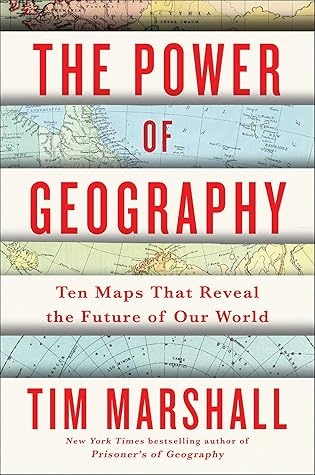More on this book
Community
Kindle Notes & Highlights
by
Tim Marshall
Read between
February 23 - February 26, 2022
the Artemis Accords governing the exploration of the Moon and extraction of its resources.
the East India Company comes to mind, which aligned its trading interests with those of the British Empire from the sixteenth century onward, and at times acted almost as a governing body in some territories controlled by the British.
Blue Origin company. Its vision is “a future where millions of people are living and working in space. In order to preserve Earth, our home, for our grandchildren’s grandchildren, we must go to space to tap its unlimited resources and energy.”
The Artemis Accords are an example of the legal, political, and military difficulties space exploration is facing up.
outdated 1967 document popularly known as the Outer Space Treaty upon which most of the rules governing the use of space are based. It says, “Outer space is not subject to national appropriation by claim of sovereignty, by means of
United Nations Office for Outer Space Affairs. Based in Vienna, it has a Committee on the Peaceful Uses of Outer Space (COPUOS), and reports to the Fourth Committee of the UN General Assembly,
Everett Dolman, “a rich vista of gravitational mountains and valleys, oceans and rivers of resources and energy.”
First there is Terra—the Earth and its immediate airspace, up to the limit after which a craft could go into orbit around the Earth without being powered. Above this is Earth Space—the region from lowest-possible orbit up to geosynchronous orbit, which aligns with the Earth’s rotation. After this is Lunar Space—from geosynchronous orbit to the Moon’s orbit. From there you enter Solar Space—everything in the solar system beyond the Moon’s orbit.
For the next few decades, the most important of these for the future of space exploration is Earth Space, particularly low Earth orbit.
“Who controls low Earth orbit controls near-Earth space. Who controls near-Earth space dominates Terra. Who dominates Terra determines the destiny of humankind.”
June 2021 NATO’s Article 5, which states that an attack on one member is considered an attack on all of them, was extended to include a collective response to attacks in space, and why the US Department of Defense has a mantra: “Space is a war-fighting domain.” In
To meet the challenge, governments are examining the possibility of positioning anti-hypersonic laser systems in space to fire downward. If deployed, it follows that machines capable of firing on the laser systems would be developed, and then defensive systems for them. Add an “etc.” and we are well into the space arms race.
After a few days the supermarkets’ delivery systems, both to their stores and your house, would be in chaos. Without GPS ships and planes would struggle to navigate, and in an extreme scenario the electricity grid could go down. As for getting a weather forecast—forget it.
The US government is working with Lockheed Martin to develop “Space Fence.” This is a surveillance system using ground-based radar to track satellites and orbital debris.
Just as there were kinetic wars inside the Cold War, so we may see limited forms of warfare in space, stopping short of action endangering our entire existence.
Our resources here are finite and competition for them sparks conflict, but above us is an asteroid named 3554 Amun. In it are nickel, cobalt, iron, and other metals with an estimated value of $20 trillion, approximately the same as the GDP of the US. It’s one of countless many, more than enough to share.
It is also in all our interests to cooperate on finding and tracking the as yet undiscovered asteroids and other objects that may threaten us, like the Tunguska meteor, which flattened hundreds of square miles of a forest in Siberia in 1908. Much bigger objects may be on the same trajectory. The dinosaurs never saw it coming—we can, and we can do something about it.


